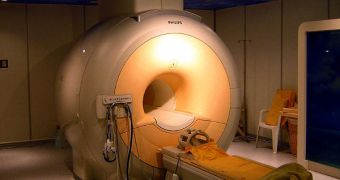For the first time ever, experts believe that they may have identified a sign that could lead to deciphering the mystery behind the conscious and unconscious activity inside the human brain. This has been a goal in neurology and other fields of research related to the cortex since their inception, but finding the key to these two processes has thus far remained elusive. The new brain scans bring further hope that a solution to this mystery will be found soon, NewScientist reports.
“It's very exciting work. The use of a reproducibility measure to disentangle conscious and non-conscious processes is genuinely new,” explains Raphael Gaillard. The expert, a neuroscientist at the University of Cambridge, was not a part of the new study. The investigators that did manage to find the hints in the brain scans are based at the Princeton University in New Jersey, and are led by expert Aaron Schurger. He and his team broke free of the standard approach to identifying consciousness, which revolved around analyzing how long brain activity lasts, what intensity it has, or how different areas of the brain relate to each other during the former two processes.
“We were looking for something other than the intensity and duration of the neural activity that characterizes conscious neural processing,” Schurger says. The team wanted to test and see whether the conscious mind, when presented with the same stimuli (an image), would create the same patterns of activity in the brain time after time. Moreover, if the photo was different, they hypothesized, than it should not enter the conscious mind, but produce different responses in the subconscious mind every single time it was displayed.
The scientists used functional Magnetic Resonance Imaging (fMRI) measurements on 12 volunteers. The participants were asked to observe a number of images, each of them specifically chose to elicit either a conscious response, or an unconscious one, in their brains. The first category of photos shows a face or a house, while the second one is a bit more complex. In order to incite a subconscious response, the scientists showed two different pictures at the same time, one for each eye. One of them was in pale orange over pale green, while the other one had the same colors, only reversed.
When confronted with these images, the human brain cannot reconcile them together, and so it shows the conscious mind a patch colored in yellow. The subconscious mind has however processed that a house or a face appeared on each separate image. Each time the visible stimuli were showed, the same conscious response appeared. In the case of the “invisible stimuli”, the subconscious response differed every single time. This, the team says, may be an indicator of where to look for conscious next. In the future, these results, which appear in the latest issue of the top journal Science, may yield new method of determining if a comatose patient is conscious, or if an anesthetized person is truly unconscious.

 14 DAY TRIAL //
14 DAY TRIAL //